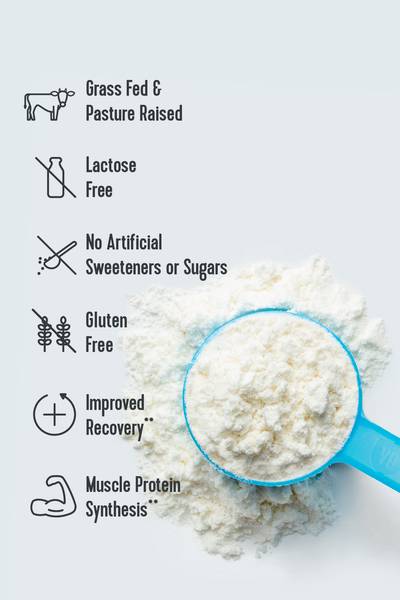It can be easy to get stuck in the mindset of your workout isn't hard if you don't get sore. But that's not always the best approach, especially when it comes to recovery and injury prevention. It's also important to work in low-impact training days to give your body a break. But, low impact doesn't necessarily mean "easy."
We tapped Jess Cifelli, NASM-CPT and Senior Master Instructor for CycleBar to get more information on the benefits of low-impact workouts and how you can still get a good sweat without putting stress on your joints. Read on to find out why you should actually add in workouts that give your joints a break.
Vital Note: We also recommend discussing your health goals with your licensed healthcare professional. They can best provide you with the diagnosis and treatment of any medical condition and assist you as well in deciding whether a dietary supplement will be a helpful addition to your regimen.
What makes a workout low impact?
A low-impact exercise is ideal when you're looking to place very little to no stress on your joints. No matter the exercise choice, at least one foot will remain in contact with the ground, keeping the impact to the joints very low, explains Cifelli.
It's a good idea to add cross-training that includes low-impact exercises (like swimming or cycling) to your routine to help avoid overusing a specific muscle or joint, according to theMayo Clinic.
What are examples of low impact exercises?
"Low impact exercises can range from walking to gentle yoga and machines such as the elliptical can provide a fluid and safe low impact workout," Cifelli says.
If you're looking for more of a cardio workout, cycling is a great option with virtually no impact to your joints. And, swimming provides a no-impact cardio workout.
Related Articles
What exercises are low impact on knees?
Swimming, walking and cycling are beneficial workouts that with proper form, will not put pressure on your knees, explains Cifelli.
And, if you're looking to build muscle strength, you can incorporate leg-specific bodyweight exercises that can help strengthen the muscles around your knees while still remaining low impact.
Some examples of these include single-leg step downs, box squats, hamstring curls, banded walks, and most yoga-centric lower body movements. As with any exercise, it's best to seek the assistance of a professional to assure proper form.

Who can benefit from a low impact workout?
Anyone from novice exerciser to advanced powerlifter can benefit from low-impact exercises.
"They are thoughtful and controlled, with all the attention being paid to proper muscle engagement," says Cifelli, adding, "This allows individuals new to exercising the opportunity to create a strong and effective foundation to grow from. Low impact exercises are extremely beneficial to elite athletes to keep moving on rest days as well."
How often should you do low impact training?
This will depend on your individual goals.
"There is a slim chance of overtraining with low impact exercises, so there isn’t much harm in incorporating them every day if the joints and muscles continue to feel strong," says Cifelli. "As always, listen to your body and allow rest days if you are recovering from an injury or just starting out on a new fitness journey."















